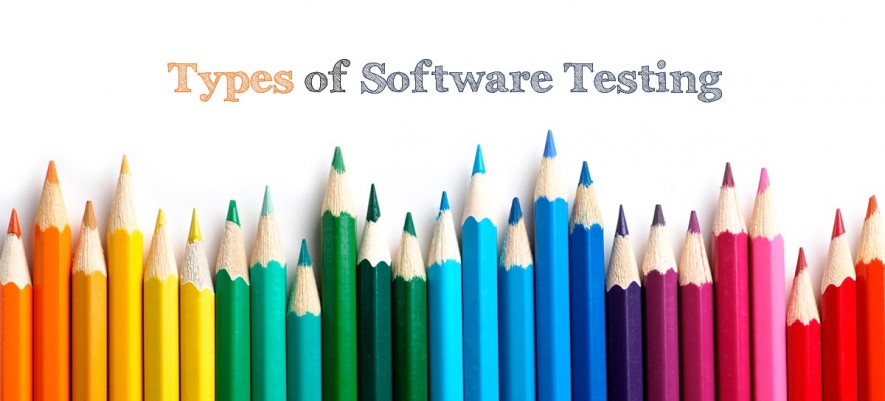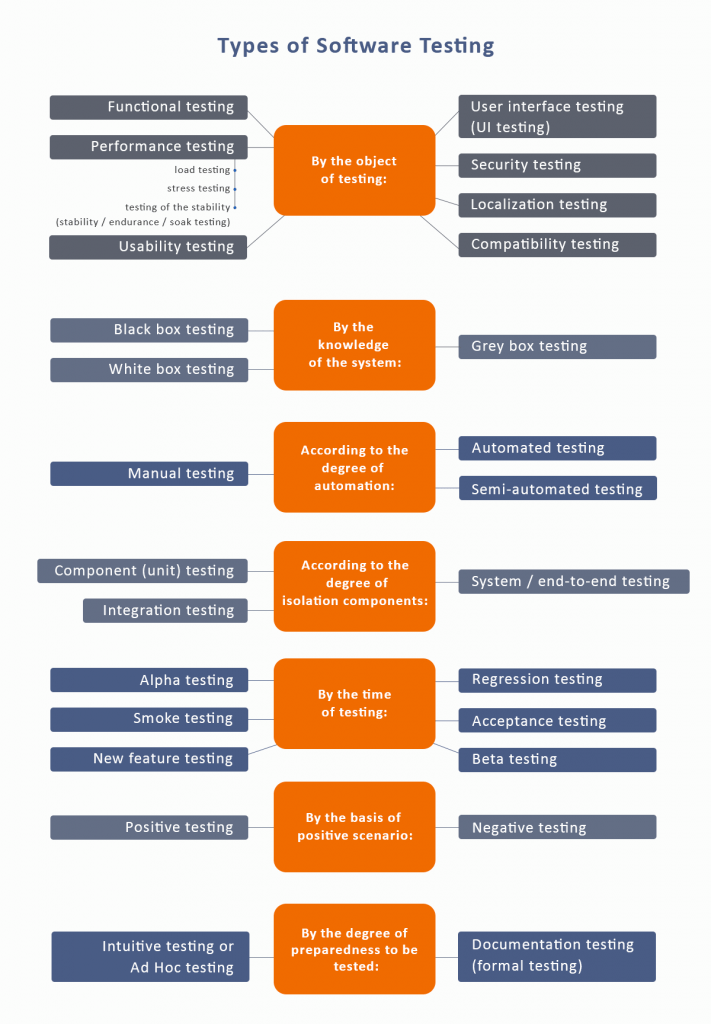- QATestLab Blog >
- QA Basics >
- Types of Software Testing >
- Classification of Software Testing Kinds
Classification of Software Testing Kinds

What is “testing”? The book Meshcheryakova MS “Software Testing” is given two definitions of this term:
1. Testing is a process of detecting errors in software
2. Testing is a technical study to obtain information related to the quality of the product being tested.
Wikipedia also “knows” only the second definition, which is just slightly differently worded: “Software Testing is the process of research of software with the purpose of obtaining information about a product,” Well, personally I like more (probably because it’s easier) the first definition.
According to Wikipedia, there are distinguish the following types of testing:
By the object of testing:
- Functional testing
- Performance testing
load testing
stress testing
testing of the stability (stability / endurance / soak testing)
- Usability testing
- Testing the user interface (UI testing)
- Security testing
- Localization testing
- Compatibility testing
By the knowledge of the system:
- Testing the black box
- Testing the white box
- Testing the grey box
According to the degree of automation:
- Manual testing
- Automated testing
- Semi-automated testing
According to the degree of isolation components:
- Component (unit) testing
- Integration testing
- System / end-to-end testing
By the time of testing:
- Alpha testing
- Smoke testing
- New feature testing
- Regression testing
- Acceptance testing
- Beta testing
By the basis of positive scenario:
- Positive testing
- Negative testing
By the degree of preparedness to be tested:
- Documentation testing (formal testing)
- Test ad hoc or intuitive testing (ad hoc testing)

Learn more from QATestLab
Related Posts:
- Main Types of Software Testing or Testers-Cats
- What is Monkey Testing?
- The Main Goal of Acceptance Testing







I believe both definitions are apt.Testing is not just finding out bugs. Performance testing, Security testing, Compatibility etc are done not with the purpose of finding out errors. It is a study done to find out the quality of the product in terms of how secure is the product or how well does it perform under certain conditions.